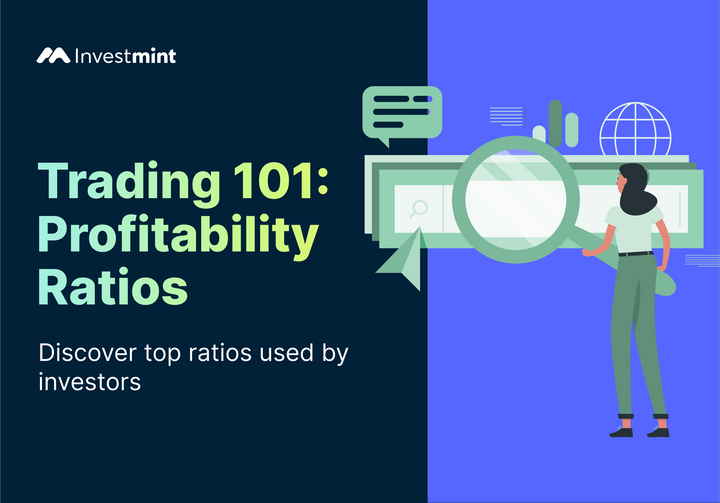Intraday Breakout Trading Strategy Explained
Breakouts are some of the most used strategies to trade the stock markets. Learn more about the intraday breakout trading strategy here.

Breakout Trading Strategy
Are you someone who enjoys short-term trading and is skilled at making quick, well-informed decisions to profit from the ever-changing market conditions? If you are, you must have several strategies up your sleeves while trading.
Every trader needs to know one crucial strategy: the Intraday Breakout Trading Strategy.
Intraday breakout trading is based on the idea that significant price breakouts can indicate strong momentum and potentially profitable opportunities. Let’s get into this article and learn what breakout trading & intraday breakout strategy, how to read breakout indicators, and everything else you need to know.
What Is Breakout Trading?
Breakout trading is a popular strategy for taking advantage of significant price movements when an asset's price breaks out of a defined trading range or a well-established pattern. The strategy is based on the idea that once the price moves beyond a key level of support or resistance, it will continue to move strongly toward the breakout.
Traders using the breakout strategy closely monitor price charts to identify potential breakout points. Breakout trading is generally profitable, especially during periods of high market volatility— allowing traders to capture substantial price movements relatively quickly.
How To Read The Breakout Indicator?
Here’s your guide to reading breakout indicators. However, you must note that no indicator is foolproof, and it's essential to use breakout indicators in conjunction with other technical analysis tools and trading strategies for accurate and reliable signals.
- Identify the Indicator: To begin, determine which breakout indicator you will use. Some of the popular breakout indicators are Flag Finder, Breakout Filter, etc.,
- Understand the Setup: Familiarize yourself with how the indicator is set up. Breakout indicators typically have parameters like period or sensitivity that can be customised to match your trading style and time frame.
- Look for patterns: The Breakout Indicator will generate signals based on the set parameters when the asset price approaches or breaks through a support or resistance level. The signals will be in the form of ranges or other chart patterns, including triangles, flags, wedges, and head-and-shoulders.
- Watch for Breakout Signals: Keep an eye on the breakout signal as the price approaches a support or resistance level. It suggests a probable breakout if it delivers a strong signal, such as a significant rise above or below a threshold.
- Confirm with Price Action: Don't rely solely on the indicator; always verify the breakout with price action. Look for a substantial price movement in the same direction as the breakout indicator's signal.
- Use Risk Management: Avoid risking a significant portion of your capital on a single trade. Use proper position sizing and risk management techniques.
- Trade Management: Consider entering a trade in the direction of the breakout when it is confirmed.
What Is Intraday Breakout Strategy?
The intraday trading breakout strategy is where traders try to profit from significant price movements within the same trading day. They look for key levels on the price chart, like support and resistance points.
When the price breaks out above a resistance level or below a support level, traders take positions in the direction of the breakout, expecting the price to continue moving in that direction. The goal is to catch short-term market momentum and benefit from sudden price spikes. One of the most basic intraday strategies is investing in stocks with a risk-reward ratio of 3:1.
Advantages Of Intraday Breakout Trading Strategy
Here are some advantages of this strategy.
- Quick Profits: Intraday breakout trading allows traders to capitalise on short-term price movements, potentially leading to quick profits within the same trading day.
- Reduced Overnight Risk: As all positions are closed before the trading day ends, traders don't carry the risk of overnight market movements, providing a sense of security.
- Clear Entry and Exit Points: Breakout trading offers clear entry and exit points based on the breakout of key support or resistance levels, making it easier to plan trades.
- Volatility Opportunities: Breakouts often occur during increased market volatility, presenting opportunities for higher potential gains.
- Less Complex: The Intraday breakout approach is relatively straightforward to understand and implement compared to other trading strategies.
- Short Holding Periods: Traders can avoid tying up their capital for an extended period, as positions are typically held for a short time, increasing liquidity and flexibility.
- Opportunity to Ride Trends: Successful breakouts lead to sustained price trends, enabling traders to ride the trend and potentially maximise profits.
How To Employ A Breakout Trading Strategy
Employing a breakout trading strategy requires a keen understanding of the investor’s part. As a beginner, you can follow these steps at the initial stages of investing.
- Identify Key Levels: Analyse the price chart and identify significant support and resistance levels. The price has previously struggled to break through or reversed direction in these areas.
- Monitor Price Action: Watch the price closely as it approaches these key levels. Look for signs of consolidation or a narrowing price range.
- Confirm with Indicators: Use breakout indicators or technical tools like Bollinger Bands, Moving Averages, or Relative Strength Index (RSI) to confirm the strength of the potential breakout.
- Wait for the Breakout: Be patient and wait for the price to break decisively above resistance or below support. This breakout should be accompanied by higher-than-average trading volume to add confirmation.
- Enter the Trade: Enter a trade toward the breakout on confirmation. Buy the asset for a bullish breakout and consider selling for a bearish breakout.
- Set Stop-loss and Take-profit: Place a stop-loss order below the breakout point to protect against potential losses if the breakout fails.
- Manage Your Trade: Monitor your trade closely and be prepared to adjust your stop-loss or take-profit levels if necessary.
- Avoid Chasing Breakouts: Be cautious about chasing breakouts after prolonged price runs.
- Practice Risk Management: Don't risk a significant portion of your capital on a single trade. Use proper position sizing and avoid over-leveraging.
- Learn from Experience: Keep a trading journal to analyse the performance of your breakout trades. Analyse both successful and unsuccessful trades and refine your strategy accordingly.
Things To Consider Before Implementing This Strategy
Here are the top 5 things to consider before incorporating this strategy into your day-to-day trading activity.
- Before you employ this strategy, assess the market's current volatility and overall conditions. Avoid this strategy in choppy or low-volatility environments.
- Look for areas where the price has previously shown significant reactions, indicating potential breakout points—Analyse historical price data to identify critical support and resistance levels.
- Choose appropriate breakout confirmation indicators as they help validate potential breakouts and provide additional insights.
- Determine the timeframe that suits your trading style and availability.
- Define your risk tolerance and use reasonable position sizing.
When To Avoid This Strategy?
One must avoid breakout strategies in markets that lack clear direction, are choppy, or have low volatility. Also, it's best to avoid trading around major news events or economic releases, as they can cause unpredictable price swings. Be careful if past data shows a higher number of false breakouts. It's better to consider alternative strategies to reduce the risk of potential losses and protect your trading capital in such situations.
Bottom Line
Intraday breakout trading offers exciting opportunities for quick profits, especially in volatile markets. Traders try to profit from strong price movements during the trading day by identifying key levels, using breakout indicators, and practising risk management. However, it's crucial to be cautious during low-volatility periods and be prepared to adapt to changing market conditions.



